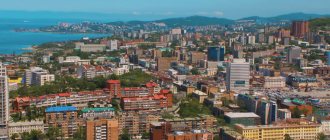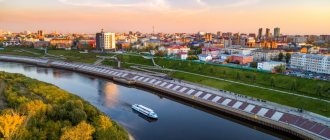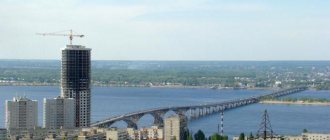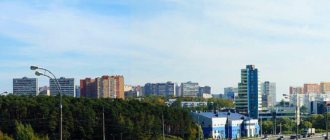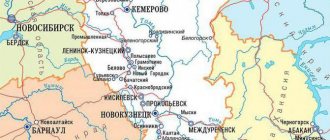Modern people have long been accustomed to living in one area of the city and commuting to another, but for residents of Magnitogorsk such movements have their own characteristics. After all, they go to work in Asia every day and return home to Europe in the evening. No matter how strange it may seem, this is actually true. This is due to the fact that the city is located on both banks of the Ural River, and industry is mainly concentrated on the left (Asian) bank. It is worth noting that Magnitogorsk is one of 12 cities that are simultaneously located in two parts of the world. Local residents have long been no longer surprised by their constant movement from one continent to another with the help of bridges, but visitors to the city are unable to hide their amazement.
Geography of the city
Regardless of whether a person has heard or not about a city like Magnitogorsk, what region it is, few can say. After all, attention is usually focused on other features of the city, of which there are many. Many even think that the Magnitogorsk region exists, but this is not so.
In fact, the city belongs to the Chelyabinsk region and is located in its southwestern part, near the border of Bashkiria. 370 square kilometers - this is exactly the area occupied by the city of Magnitogorsk. Which region - you already know, all that remains is to add that administratively the city is divided into 3 districts - Pravoberezhny, Leninsky and Ordzhonikidze.
Park of Culture and Leisure “Lukomorye”
Address:
Naberezhnaya st., 5/1, Magnitogorsk
One of the most famous parks in Magnitogorsk is located in the Leninsky district of the city right on the Embankment.
This is a very beautiful and picturesque place - the park stands on the shore of a factory pond, where reeds grow and seagulls fly.
The park has everything for active recreation: a court for volleyball, football, rugby and even minigolf! There is also a workout area and several outdoor exercise machines.
In the summer, you can lie on a sun lounger and sunbathe in the park. And for children there is a separate area with a trampoline, a children's playground and a shooting range. “Lukomorye” is loved by all residents of the city, without exception.
Ecology of Magnitogorsk
The unfavorable environmental situation is the most acute problem facing modern Magnitogorsk. What area it is - today this is not the most relevant for the reason that people do not want to go there because the level of pollution is too high. Scientists from the American Blacksmith Institute classified this city as one of the cities in the world with the worst ecology. A concentration of formaldehyde was detected in the atmosphere that is 4 times higher than the maximum permissible limit. There are many other harmful substances in the air.
The metallurgical plant is the main reason for such an unfavorable environmental situation, which is characteristic of Magnitogorsk. The Chelyabinsk region does not have a single city as polluted as this one. You can often see a cap of gray-brown-crimson dust over Magnitogorsk and smell the acrid smell of hydrogen sulfide. But despite this drawback, the city has many interesting places to visit and objects worth seeing.
Literary Square
Address: Magnitogorsk, Literary Square
On Suvorov Street there is a small square called “Literary”. Nobody knows why it was given such a name, but that is what the residents of Magnitogorsk call it.
On the territory of the small park there is a children's playground, a sports area with horizontal bars and exercise equipment, and there is also a volleyball court.
All areas of the park are connected by well-maintained paths. There is also a fountain made of stone in “Literary”, but due to problems with the pipeline it no longer works.
History of the city
The founding date of the city is 1743. Initially it was a fortress village located on the banks of the Yaik River. As of 1759, this village consisted of 110 residential households and 300 inhabitants. It was in this year that iron ore deposits began to be developed. The first ore processing plant, called Beloretsky, was built in 1874. At this time, 2.5 thousand people worked there. The villages of Magnitny, Navarinsky, Chernigovsky, Yangelsky, Trebiatsky and the settlements of Verkhnekizilsky, Bobrykinsky, Smely in 1881 supplemented Magnitogorsk. No one probably remembers what region or region it was in those years, but it is known for sure that after the annexation of the listed settlements, the population increased to 10,000 people.
To establish a connection with Beloretsk, a railway was built in Magnitogorsk in 1915. 1929 was the year of construction of a metallurgical plant in the city, which turned Magnitogorsk into the center of metallurgy in the country. Beginning in 1932, the city had its first school, pedagogical institute, theater, airstrip, several tram lines, a cement plant and a music school. In 1940, the city's population was 147 thousand inhabitants. The 50s became a period of expansion of Magnitogorsk - its area increased significantly, many new residential buildings were erected.
University Square
Address: Russia, Chelyabinsk region, Magnitogorsk, 23rd quarter, University Square
Near MSTU. G.I. Nosov several years ago opened a park dedicated to the student construction team of Magnitogorsk. There is also a memorial sign in honor of all student groups in the city.
On the day of the grand opening of the composition and the square, a “Time Capsule” , which contains a message to descendants. It will be opened only in distant 2040, when the student movement of Magnitogorsk turns 75 years old.
Students often walk in the Student Square after classes, and various events organized by students are also held here.
How to get to Magnitogorsk
There is no airport in the city itself; it is located in the distance, but this is where local residents and guests who want to visit Magnitogorsk fly. It is not necessary to know what region this city is located in, but it is important to familiarize yourself with the types of transport you can use to get here and its schedule in advance. Moreover, the local airport already belongs to the Republic of Bashkortostan, located only 14 km from Magnitogorsk. You can get from the airport to the city by one of the city buses, and fly by plane from Orenburg, Moscow, Antalya, Mineralnye Vody.
You can also come to Magnitogorsk by train, but you will have to spend 36 hours on the road from Moscow. As for the railway connection with cities such as Sibay, Ufa, Kartalov, Beloretsk and others, it is also excellent here.
Musical Square
Address: Russia, Chelyabinsk region, Magnitogorsk, Musical Square
In Magnitogorsk on the street. Labor, next to the Center for Aesthetic Education of Children, there is a very interesting and unusual square - Musical. Its special feature is musical instruments made of metal. Here you can see a piano, guitar, drums, accordion, saxophone and cello with music stand. The entrance to the park is decorated with a treble clef. All instruments are made to human height.
The territory of the park is decorated with perennial spruce trees that grow along the brick paths. For those who want to sit and admire the music. tools, benches were placed in a small park.
City infrastructure
Today the Magnitogorsk deposit is practically left without reserves, Magnitnaya Mountain no longer exists, but metallurgy plays a key role in the city’s economy. The metallurgical capital of the country is what Magnitogorsk is often called. Which region has the largest metallurgical plant is known not only in Russia, but also in many CIS countries.
The city's transport links are at the highest level - 17 bus, 35 tram routes, as well as many minibuses. More than 130 tram trains, about 100 buses and 900 minibuses operate in Magnitogorsk every day. The city has a well-developed trade sector - approximately 20% of the population works there. Today Magnitogorsk has more than 800 stores on its territory. What region it is, people don’t even think about it, because they don’t need to go to the regional center, because here they have everything they need.
Magnitogorsk can also safely be called a center of education and science. After all, on its territory there are 3 universities (technical and classical universities and a conservatory), 54 secondary schools, among which there are gymnasiums, lyceums, as well as schools with in-depth study of certain subjects.
PKiO “Ecological”
Address: Lesoparkovaya st., 1, Magnitogorsk
On Lesoparkovaya Street there is a real oasis located right within the city. A large green area where you can have picnics, play sports and enjoy being in nature.
The park has a football field , a basketball court and a shooting range. And children will love the large playground. Various entertainment events and celebrations are also regularly held here.
In the winter, the park has 2 skating rinks for hockey and ice skating, as well as ski tracks and large snow slides where not only children, but also adults can ride.
Shopping in Magnitogorsk
Jazz Mall is one of the largest shopping centers in Magnitogorsk. You may not know what area this is, but shopping lovers simply cannot ignore this “mall.” After all, here for ladies and men who cannot imagine going out into the city without shopping, there is everything you need: many shops with clothes, shoes, cosmetics, leather goods, jewelry, appliances and many other goods, as well as cafes where you can have a snack and gain strength for further shopping.
The “Central City Fair”, located on the street, is extremely popular among shopping lovers. Gryaznova, shopping center "Gostiny Dvor" and "Cascade" on Karl Marx Avenue, "Home" on Lenin Avenue and "Troika" on the street. Soviet.
Victory Park
Address: Lenin Ave., 83, Magnitogorsk.
On Lenin Avenue there is a small park named in honor of the victory of the Russian army over the Nazis in the Great Patriotic War.
In the park there is the first part of the triptych “Sword of Victory” - “Rear Front”. The second part, “Motherland,” is located in Volgograd, and the third, called “Warrior-Liberator,” is located in Berlin. In front of the Magnitogorsk monument stands the Eternal Flame.
The park is a clean green area, where it is very quiet and peaceful. There are benches along the paths, and a tall monument is visible from all sides of the park.
Sights of Magnitogorsk
Among the attractions of Magnitogorsk, museums deserve special attention, the most famous of which are Boris Ruchev’s apartment, the Art Gallery, the Museum of Local Lore and the museum on the territory of the metallurgical plant.
Fans of theatrical performances should visit the local Drama Theatre. A. S. Pushkin, State Opera and Ballet Theater, as well as the Harlequin puppet theater, which is especially important for families with children.
The ensemble of Metallurgov Avenue and the Ensemble of Monuments on Leninskaya Square are the most famous architectural monuments that the city of Magnitogorsk has on its territory. Every schoolchild probably knows in which area these attractions are located. The first permanent house, erected in 1930, the monument to the steam locomotive that first arrived in Magnitogorsk, the Church of the Ascension of the Lord, the Singing Fountain, the Church of St. Michael the Archangel, a Muslim mosque and many other objects also deserve attention.
Peace Square (Square named after M.Yu. Lermontov)
Address: Russia, Chelyabinsk region, Magnitogorsk, park named after M.Yu. Lermontov
Peace Square is one of the most cozy and beautiful places in Magnitogorsk. A quiet and peaceful place with many trees, under which there are charming red benches.
A special feature of the park is the monument to the famous poet M.Yu. Lermontov. The literary genius sits on a chair, holding an open book in one hand, the palm of the other on his knee, and looks down thoughtfully. Behind him stands a stele with the poet’s signatures and drawings.
At night, the park area is illuminated with bright colored lights, which gives this place a special atmosphere.
Entertainment in Magnitogorsk
Despite the fact that Magnitogorsk is just a center of the metallurgical industry without a long history, neither local residents nor visiting tourists will be bored here. The most common pastime may be visiting cinemas (“Sovremennik”, “Partner”, “Kronverk Cinema”, etc.), clubs (“Pyramid”, “Full Moon” and others) and entertainment venues, “Boomerang”, “Universal”), which There's quite a lot here. Or you can go get acquainted with the numerous streets, parks and buildings of the city.
Families with children should visit the local Waterfall of Miracles water park, the city circus or one of the many sports centers. And if you are completely tired, you can go to one of the local restaurants or cafes and, while enjoying delicious dishes, discuss with friends or family members a great day. The most famous catering establishments in Magnitogorsk are such as the Nekerov-Regis restaurant, Sergey's pizzeria, Avenue cafe, DeJaVu restaurant and many others.
And of course, it is important not to forget to walk along the Central Bridge, which connects Europe and Asia, and also take a photo next to the signs that are installed on both edges of the bridge.
Districts and real estate of Magnitogorsk: which coast is better to live on?
Strict geographers and cartographers divide Magnitogorsk into 3 administrative districts: Leninsky, Ordzhonikidze and Pravoberezhny. However, local residents in most cases prefer a simpler division - Right Bank and Left Bank. The fact is that the famous Ural River flowing through the city divides it into two unequal parts: the “working quarters” of the Left Bank and the more respectable Right Bank. These parts of the city are connected by three bridges, called the Southern Passage, the Central Passage and the Cossack Crossing.
Magnitogorsk map
It is along the Urals that the geographical border between Asia and Europe passes. So, while living in Magnitogorsk, you can regularly travel from one part of the world to another. Signs "Europe - Asia" are located in the center of each of the bridges. Under it you can often find city guests taking pictures. The locals are already quite indifferent to this cute feature of Magnitogorsk – they’ve gotten used to it.
Europe Asia
Local residents are more concerned about the environmental situation in the city. As mentioned above, Magnitka occupies the top positions in the not very honorable ranking of the most environmentally disadvantaged settlements. The work of the giant MMK and its subsidiaries - calibration, hardware and other plants - is to blame. Therefore, the industrial Left Bank (or rather the left bank part of the Ordzhonikidze and Leninsky districts) is considered not the best place for housing.
So apartments and rooms can be purchased quite cheaply here. The average cost of a left-bank “kopeck piece” is from 1,200,000 to 1,600,000 rubles (depending on the area, layout and condition of the living space). Renting a room will cost 3-4 thousand per month, and it is quite possible to rent a small apartment for the same period for 8-12 thousand rubles.
Housing on the Left Bank
The “Asian” Left Bank arose on the site of a workers’ settlement created in 1929 for the construction and subsequent maintenance of the Magnitogorsk Iron and Steel Works. Barracks were built for the enthusiasts who came to build the MMK. With the development of the city, major housing development was organized here, starting with Pionerskaya Street. Despite the fact that these houses have gone through more than one major renovation, their spacious and comfortable apartments are in great demand among Magnitogorsk residents. However, some housewives claim that the kitchens here could have been larger.
Currently, representatives of the working class live in this part of the city, working at MMK and attracted by the relatively low cost of housing. Young families with average and low incomes often rent or buy apartments here. Marginal individuals often find themselves on the Left Bank, having received a room or a tiny apartment as a result of a series of transactions for the sale of more prestigious living space.
Typical house on the Left Bank
It is worth noting that the local Stalinist and Khrushchev buildings are already pretty battered by life and most of them require serious repairs. The unfavorable ecological situation of the Left Bank also affects their appearance. Even surprisingly beautiful examples of the Stalinist Empire style became covered with untidy black stains over time. However, apartments in such houses often turn out to be very, very good: with large square footage and high ceilings. And in many courtyards, children’s playgrounds have been installed to the delight of children and their parents.
A number of houses in the area fall under the relocation programme. The fact is that these buildings are located in particularly unfavorable places and living in them, according to city authorities and Magnitogorsk environmentalists, can cause serious harm to people’s health. As a result, driving along the left bank, you can see empty houses (for example, two-story buildings in the area of the City Theater and on Pionerskaya). Their residents have already been resettled to other, more prosperous areas. Such abandoned houses often serve as a refuge for antisocial elements and groups of teenagers.
House on Pionerskaya Street
Entry to Magnitka from the left bank is through the private sector. For the most part, these are ordinary modest houses with tiny plots of land. Some of the local residents even manage to maintain small farms. Away from the main streets, you can even stumble upon free-roaming chickens or geese. However, you can also see modern two- and three-story cottages here, but this is the exception rather than the rule.
In the “Asian” part of the Ordzhonikidze district there are many small heterogeneous villages with individual buildings. Mostly representatives of the middle class settle here, having managed to save up a more or less decent amount to build their own home. The most prestigious are the sleeper houses located in the southern part of Magnitka, closer to the Ural River. Other villages on the left bank mainly consist of panel houses.
In recent years, many truly respectable villages have appeared on the right bank of the Urals (the village of Magnitnaya, etc.). Private three- and four-story cottages are being built here. And in the southern tip of the “European” part of the Ordzhonikidze district, the local Rublyovka even appeared. This is the village of Khutorki, popularly called the “Tsar’s Village”. This is where most of the Magnitogorsk elite live: successful businessmen, some MMK managers, “notable” hockey players and other well-known personalities in the city.
The cost of a “house” on Magnitogorsk Rublyovka is off the charts, not just thousands, but millions of rubles. On the Internet you can find advertisements for the sale of a three- or four-story cottage for both 12 and 40 “lemons.” However, such an acquisition is considered a very profitable investment. After all, this is not just living space, but a kind of passport to the world of the rich and famous.
House on Khutorki
However, “mere mortals” live quite comfortably in the right-bank “European” part of the Ordzhonikidze district. Mostly there are panel houses from the Brezhnev era. The apartments in them have an improved layout (compared to Khrushchev buildings, of course), and therefore a higher cost. The price of apartments is significantly affected by the distance from MMK. Therefore, for housing with an area of 60-70 square meters they ask for 1.5-1.7 million rubles and more, but an apartment in an elite new building can cost 3-4 times more.
Housing in Pravoberezhny district
As you might guess, real estate prices in the Pravoberezhny district are even higher. Firstly, residential areas located on the right bank of the Urals are located in a relatively favorable ecological zone. And secondly, this is the real center of business and administrative life of the city with a well-developed infrastructure. This is where the city administration, branches of large commercial banks, communications enterprises and design institutes are located.
This is the central area of the city, occupying a fairly large area. Its borders lie between the park area of the Ural coast and Sovetskaya Street (from the Drama Theater to the Cossack crossing). The architecture of administrative and other “public” buildings is very original. For the interior decoration of many of them, marble, granite, openwork cast iron parts and even jasper were used.
Residential buildings in the Pravoberezhny district are mainly represented by standard panel and block Khrushchev buildings, similar to each other like twin brothers. At one time, their appearance helped to at least partially solve the housing problem that was particularly acute at that time.
In theory, the narrow streets of the area (except for the central highways - Lenin Avenue and Karl Marx Street), clogged courtyards and the not very attractive appearance of the houses should be factors reducing the cost of apartments. However, housing in the Pravoberezhny district is not cheap at all (on average 30-35 thousand rubles per square meter). The center is the center. If you wish, you can find fairly cheap housing here. True, it will be a tiny one-room apartment in a small family with a small kitchen, a combined bathroom and a sit-down bathtub.
Lenin Avenue
But it is unlikely that you will be able to save money on buying housing in the right bank block No. 14 “a” (this is the Leninsky district of Magnitka). The houses that make up it were built after 1945 by German prisoners of war and are considered real architectural monuments. The architecture of the quarter contains Western European motifs, and its interior space is represented by small closed courtyards. This block has its own composition: the houses in it are built relative to a planning axis, starting from the central arch of a two-story residential building on the street. Uralskaya, 36 and smoothly descending towards the Ural River.
All the houses in the block are two-story (the builders were required to put living space into operation as quickly as possible), and the materials for them were slag concrete and flagstone. From Uralskaya Street you can get here through wide gates with patterned metal bars. The houses themselves are decorated with patches of flagstone, small balconies and other interesting elements. So the desire to live in the “German Courtyards” will be quite expensive.
Magnitogorsk German town
The most expensive housing in Magnitka is located in the blocks of the “European” Leninsky district. The so-called Stalin buildings (houses built in the pompous “Stalinist Empire” style) predominate here. Architects used turrets, niches, colonnades and portals as decorative elements for them. Many of the buildings have front entrances, and the apartments here have a convenient layout, large area and significant ceiling heights. The northern part of Leningradskaya Street (formerly Zhdanova Street) is considered one of the architectural landmarks of the area.
Leningradskaya street
From the windows of many houses here, the smokestacks of the Left Bank are clearly visible. However, the abundance of all kinds of squares, gardens, front gardens, boulevards and green courtyards partially helps to compensate for the not entirely favorable environmental situation associated with the relative proximity of the MMK (about a kilometer).
Proximity to the center, original architecture, cozy streets and abundance of greenery make housing in the Leninsky district especially attractive. Naturally, increased demand could not but affect the cost of local apartments. The cost of 1 square meter of living space here is significantly higher than the average level of Magnitogorsk real estate prices.
